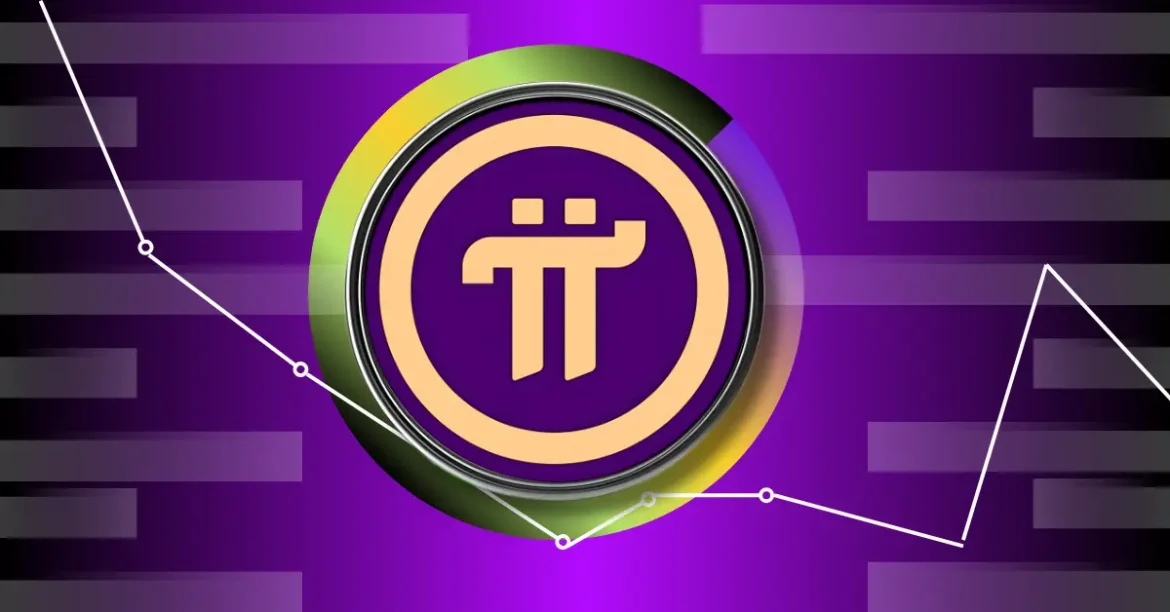Pi Network (PI) Price Prediction: An In-Depth Analysis for 2025–2030
The Pi Network, a cryptocurrency project that has garnered significant attention due to its large user base and novel mining approach, presents a fascinating case for price forecasting. Given the varying projections by different analysts and platforms, it is essential to sift through the data and narratives to understand potential price paths of Pi (PI) in the medium to long term, from 2025 through 2030 and beyond.
Current Market Sentiment and Recent Price Behavior
Recent technical indicators portray a neutral sentiment for Pi Network. According to CoinCodex, the Fear & Greed Index stands at 52, indicating neither strong optimism nor pessimism among traders. Over the last month, Pi exhibited 14 green days out of 30, with price volatility around 20.77%. The current Pi price is approximately $0.64 as per the latest data.
This neutral market mood suggests that traders and investors are awaiting more definitive signals, possibly linked to upcoming project milestones or broader crypto market trends.
Price Forecasts for 2025: Divergent Views
The price outlook for 2025 varies markedly across forecasts, reflecting uncertainty about Pi’s market behavior post-mainnet launch and its ecosystem development.
– Bearish to Moderate Predictions:
Some analysts anticipate a dip or stabilization around the $0.45 to $0.48 range by mid-2025. CoinCodex expects a 25.31% decline, reaching roughly $0.48 by July 2025, while CoinGape estimates a minimum floor near $0.458. These projections seem grounded in cautious technical analysis and reference current sentiment data.
– Optimistic Scenarios:
Conversely, other reports, such as from Crypto News and coindcx.com, indicate bullish momentum with prices expected to rise above $0.74 by the end of 2025 and potentially surge beyond $2.50 as market confidence rebounds. These bullish expectations are tied to the expansion of Pi’s ecosystem and growing user engagement, factors that historically fuel substantial crypto price appreciation.
– High-Volatility and Uncertainty:
Historical chart analysis, including Pi’s transient $3 peak on OKX followed by sharp falls amid geopolitical tensions, underscores the token’s vulnerability to external macroeconomic shocks. Such events inspire both optimism about price ceilings and caution about price crashes.
Mid-Term Outlook: 2026 and Beyond
Looking beyond 2025, predictions become even more varied, reflecting increased uncertainty.
– Mid-Term Growth Projections:
Some forecasts, such as those from 99Bitcoins, suggest the price could escalate dramatically to anywhere between $5 and $15 in 2026. This range hinges on broader cryptocurrency market performance and Pi’s ability to leverage its 45+ million strong user base for real adoption and liquidity expansion post-mainnet launch.
– Steady Growth Hypotheses:
Other analysts maintain more moderate figures, with Pi potentially reaching the $0.87-$1.70 range by 2026, progressing to about $1.24 by 2029. These figures rely on sustained ecosystem development, increased trade volumes on exchanges, and positive sentiment among investors.
– Long-Term Speculation:
Wildly optimistic forecasts propose that Pi could reach $4.00 or even higher if the network constructs a well-structured ecosystem and triggers exponential growth. However, such predictions must be weighed against market realities, competitor performance, and regulatory landscapes influencing crypto adoption.
Key Factors Influencing Pi Network’s Price Trajectory
The shape of Pi’s price curve will be influenced by several vital elements:
– Mainnet Launch and Exchange Trading:
The anticipated mainnet launch in December 2024 is a pivotal event, expected to enable Pi trading on major exchanges — a critical step toward true price discovery and market liquidity. Accessibility on exchanges directly correlates with traders’ ability to buy, sell, and speculate, heavily impacting price volatility and trends.
– User Base Expansion and Network Adoption:
Pi Network boasts an impressive 45 million-plus miners. The transition from a permissioned mining model to open market trading will test whether this large interest translates to effective demand. User enthusiasm, retention, and the introduction of real-world use cases can drive sustained demand.
– Broader Cryptocurrency Market Conditions:
Like most digital assets, Pi’s price is tethered to general crypto market cycles. Bullish phases driven by institutional acceptance, technological innovation, or macroeconomic factors can lift prices. Conversely, regulatory crackdowns, investor fear, or technological failures could suppress them.
– Geopolitical and Economic Factors:
As observed from previous price swings linked to geopolitical tensions, turbulence in traditional equity markets and international trade can indirectly affect crypto assets, including Pi.
Strategic Implications for Investors and Traders
For those contemplating Pi Network as an investment or trading opportunity, the following points emerge from the analysis:
– Volatility Management:
Given Pi’s price volatility and mixed sentiment, strategies should accommodate rapid fluctuations, with clear entry and exit points.
– Monitoring Mainnet Developments:
Close attention to the mainnet launch and initial exchange offerings will provide early indicators of genuine market value versus speculative pricing.
– Diversification and Risk Awareness:
The wide range of forecasts underscores uncertainty. A balanced portfolio considering both established and emerging crypto assets can mitigate exposure.
– Fundamental Assessment:
Beyond technical price predictions, evaluating Pi Network’s ecosystem growth, partnerships, and utility adoption is crucial to understanding long-term viability.
Conclusion: Navigating Pi Network’s Price Landscape
Pi Network stands at an intriguing crossroads as it approaches key technological milestones and wider market exposure. The price predictions for 2025 through 2030 span from modest declines and stable ranges around $0.45-$0.75 to ambitious peaks in double digits driven by ecosystem expansion and user-driven demand.
While the path forward contains considerable uncertainty colored by external market forces and internal project dynamics, the potential for Pi to evolve into a mainstream digital currency cannot be discounted outright. Investors and analysts alike should watch for critical signals emerging from mainnet rollout, adoption metrics, and exchange liquidity.
Ultimately, Pi’s journey may well illustrate how a large, engaged user community combined with strategic market integration can shape the fate of an emerging cryptocurrency in an ever-volatile landscape.





